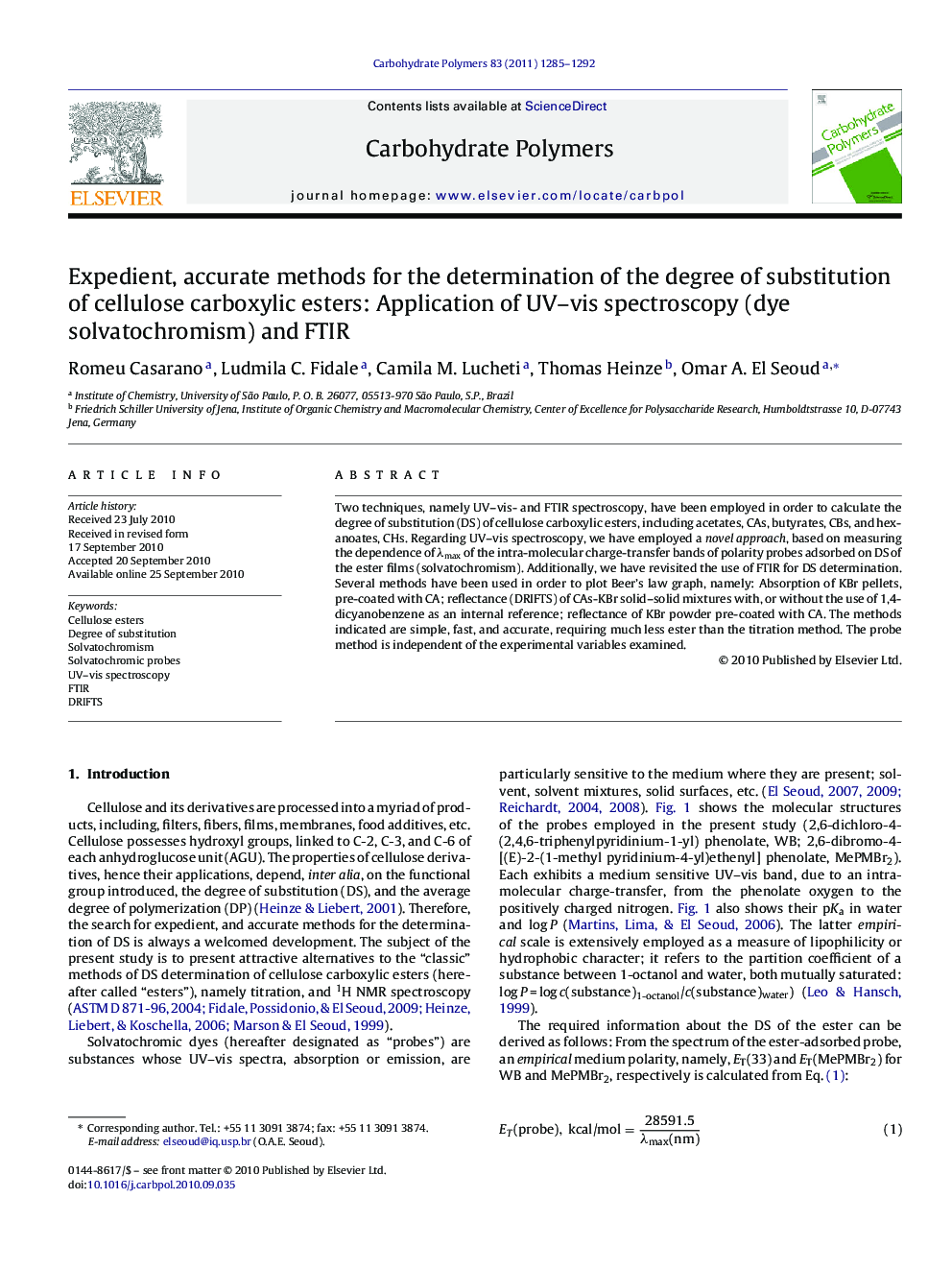| Article ID | Journal | Published Year | Pages | File Type |
|---|---|---|---|---|
| 1386915 | Carbohydrate Polymers | 2011 | 8 Pages |
Two techniques, namely UV–vis- and FTIR spectroscopy, have been employed in order to calculate the degree of substitution (DS) of cellulose carboxylic esters, including acetates, CAs, butyrates, CBs, and hexanoates, CHs. Regarding UV–vis spectroscopy, we have employed a novel approach, based on measuring the dependence of λmax of the intra-molecular charge-transfer bands of polarity probes adsorbed on DS of the ester films (solvatochromism). Additionally, we have revisited the use of FTIR for DS determination. Several methods have been used in order to plot Beer's law graph, namely: Absorption of KBr pellets, pre-coated with CA; reflectance (DRIFTS) of CAs-KBr solid–solid mixtures with, or without the use of 1,4-dicyanobenzene as an internal reference; reflectance of KBr powder pre-coated with CA. The methods indicated are simple, fast, and accurate, requiring much less ester than the titration method. The probe method is independent of the experimental variables examined.
